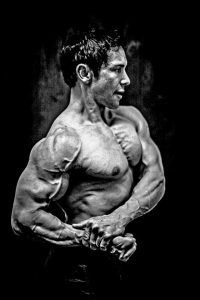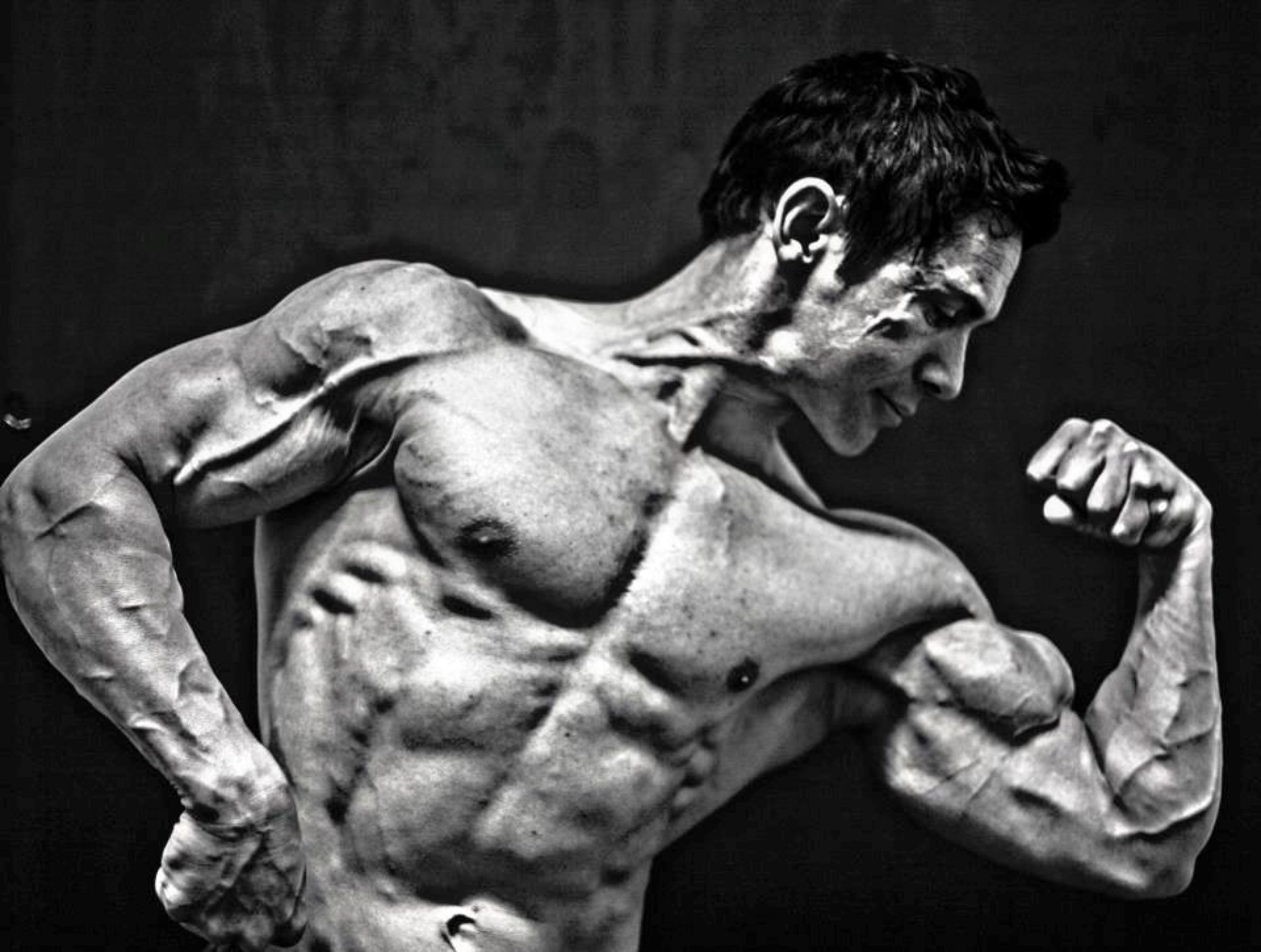
What are the best exercises for increasing muscle growth and strength for each body part? Over the years I have tried a wide range of exercises to try and answer that very question. What I have found is that sometimes you have to think outside the box and not follow what everyone else is doing to find what works for you. Also it is sometimes the “hard exercises” that people often avoid which can make all the difference. Below is a list of exercises which have done the job for me!
Calves
Partial rep calf raises: I do not try and get a stretch in this exercise- As soon as I stopped trying to get a full range of motion in this exercise I felt the muscles work better, my calves began to grow and there were no more ankle injuries!
Leg press calf raises: I actually find donkey calf raises to be the best, however, finding a suitable machine or a few people willing to sit on your back so you can do this exercise can be as rare as hens’ teeth. A good substitute is the leg press calf raise; just make sure your torso is 90 degrees to your legs so you get the same benefits as the donkey calf raise.
Partial rep seated calf raises: Again same rationale as for calf raises. I make sure my rep goals are higher due to the higher proportion of slow twitch fibres in the soleus compared to the gastrocs.
Sprints: I find this activates the calves extremely well and is more of a compound exercise, as the bigger leg muscles are involved. You can increase intensity by using a sled, parachute or running on an incline. Just be careful to warm up properly as this activity is not as controlled as performing weights.
I have to say for most people I would suggest performing a full range of motion in these exercises, however, if you have high muscle bellies, small ankle joints and your calves haven’t grown using a full range of motion for a while then give this a try. I also find training calves in bare feet allows me to feel the calf muscles a lot better too. I like to grip with my toes on the edge of the leg press platform or calf raise block for a stronger calf contraction.
Quads
Barbell Hack Squats: This is my favourite quad exercise which never fails to give me a good pump and burn in my quads. This is basically a deadlift with the bar behind your legs. It can be awkward to start with, but once you get the hang of it you can use a reasonable amount of weight to increase your quad strength and size.
Barbell Squats: This is a great exercise! It is hard to leave it out when you consider the anabolic effect of this exercise on the whole body. However I think a range of different squat versions and depths are beneficial as long as you don’t neglect going to at least parallel most of the time. I also like BB/Smith machine Front squats, Feet forward smith machine squats and Squat pulses (BB Squats where I pulse from just below parallel to just above parallel). I have also found the trap bar deadlift to be good change once and a while for squats as it places less stress on the lower back but still allows you to really hammer your quads.
Walking lunges: I like to do this at the end of the workout to really pump the quads up. I lunge until failure so reps are high (50+).
Again I prefer to perform all quad exercises in bare feet or shoes with very thin soles. I always have a better mind muscle connection when I do this. I also make an effort to slow down the negative (eccentric) or lowering of the weight to increase intensity and avoid injury. I have to say that squats may not be everyone’s cup of tea however the trap bar deadlift is a great alternative for people who have lower back issues, long torsos or are really tall.
Hamstrings
Leg curls: My rep goals are around 6-8 for this exercise due to the higher proportion of high twitch muscle fibres in the hamstrings. I always use a combination of static contractions, x-reps and rest pause to increase intensity too.
Slightly bent knee deadlifts: I make sure my knees are slightly bent throughout the movement and my back maintains lordosis (stays slightly arched or flat). You should aim to lift 75% of the weight you can squat for 8-10 reps.
Good mornings: Same kind of movement as slightly bent knee deadlifts except the barbell is on your traps like a squat. (I usually only allow my torso to go to parallel at the bottom of the movement) You can’t use much weight but the soreness the next day tells you it does the business. Bill Starr, a strength coach and writer for Ironman magazine suggests you should aim to lift 50% of the weight you can squat for 8-10 reps. Believe me that is a tough goal!
Back extension: I have done this with straight or bent legs with success. I get best results when I utilise negative accentuated reps; 1 second on the way up (positive or concentric movement) and at least 5-6 seconds on the way down (negative or eccentric movement).
I have never seen anyone with too much muscle in their hamstrings. Hamstring exercises are often neglected as they are not the most visible and are often completed after the more preferred quad exercises. However, to prevent injury and have a point of difference compared to everyone else make sure you work your hamstrings hard!
Hopefully some of these ideas have sparked a few thoughts of your own on how to increase your muscle and strength in the weight room. Next time I will look at the upper body!

